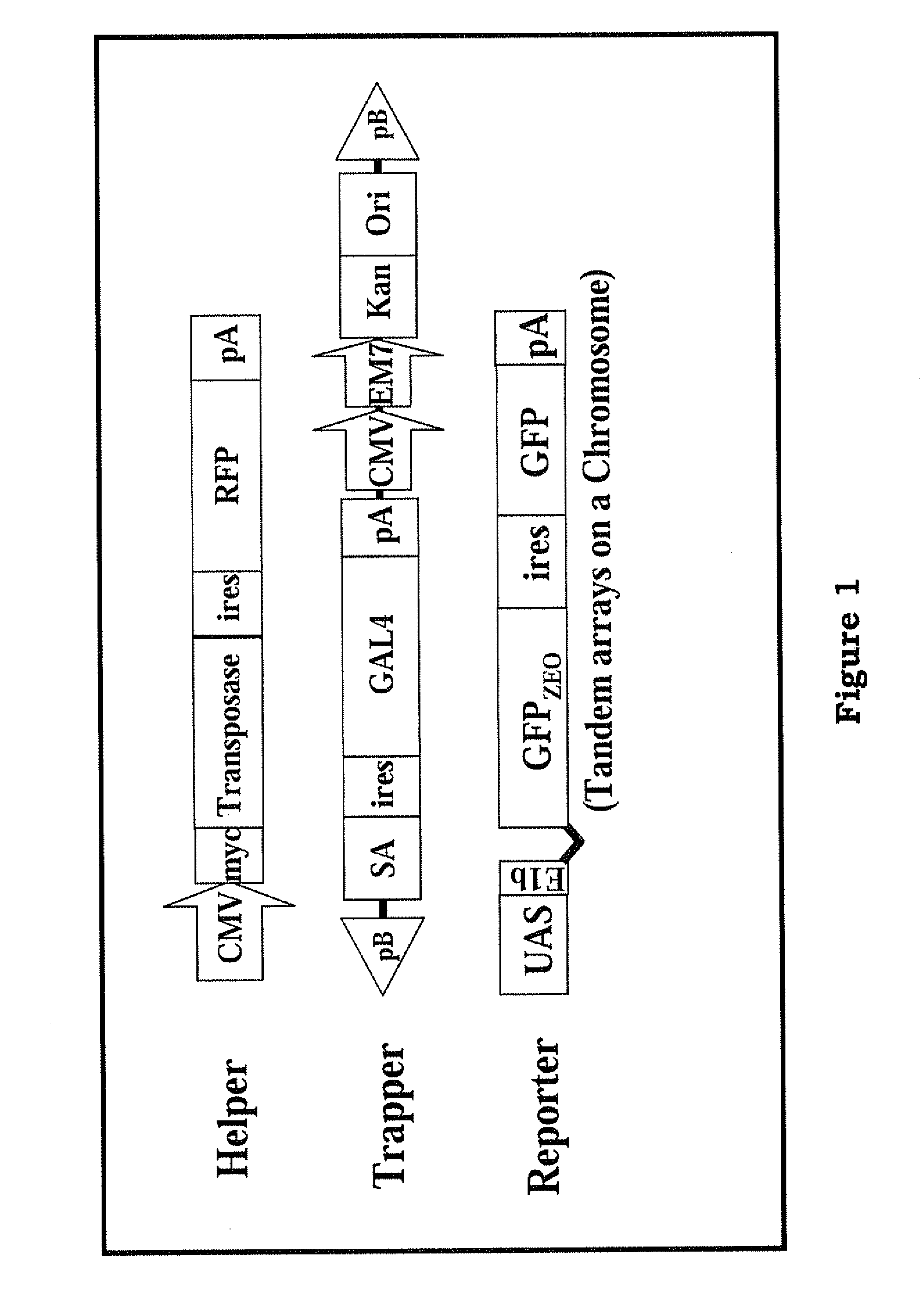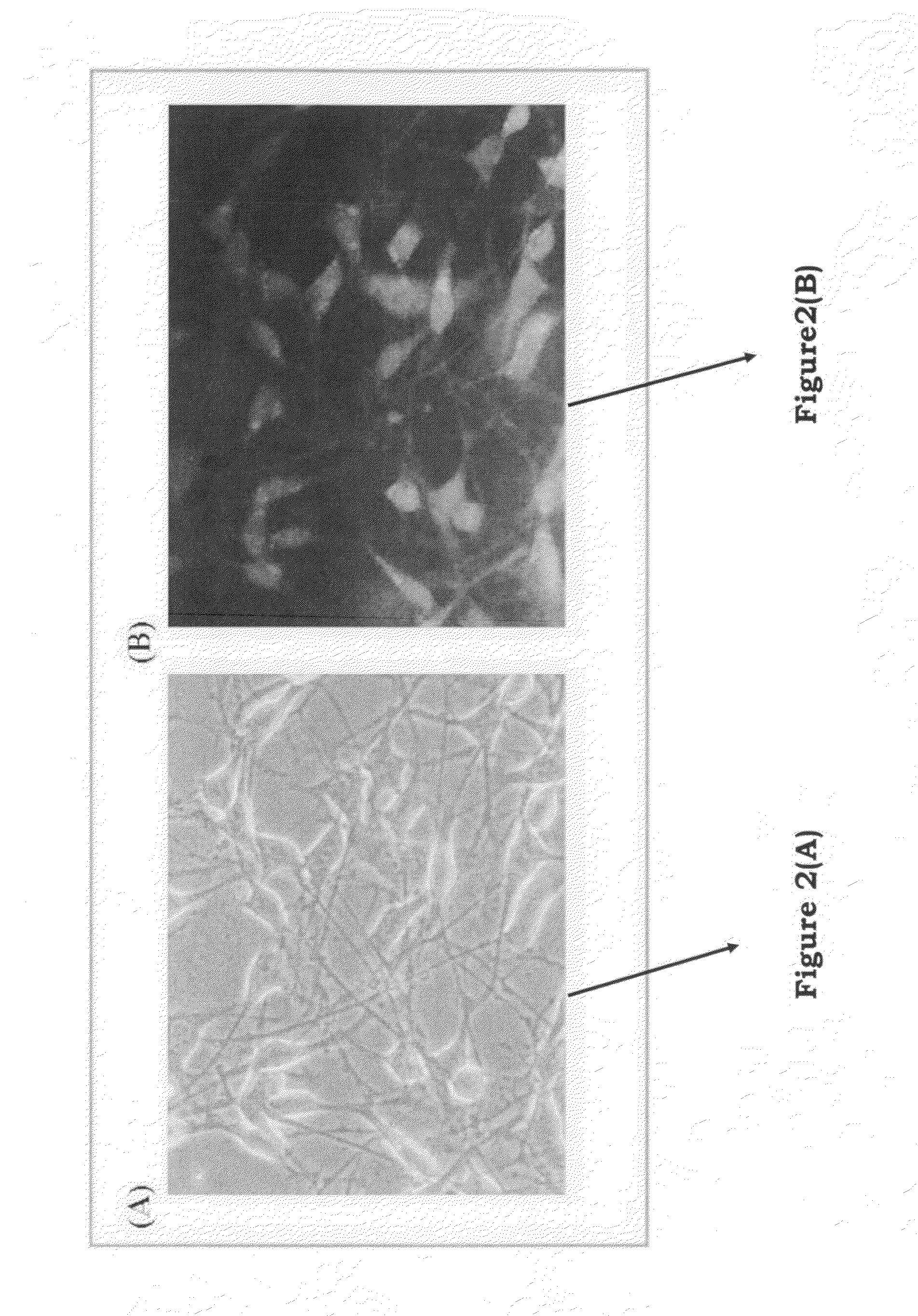Method for performing genetic modification under a drug-free environment and components thereof
a technology of drug-free environment and genetic modification, applied in the field of genetic manipulation in cell lines and organisms, can solve the problems of increasing the probability of trapping new genes in es cells, limiting the current available gene trap technology, and largely unknown how these three billion nucleotides of human genome carry out their multitude of functions, so as to minimize the bias of targeting genes, facilitate the effect of targeting genes, and evaluate the efficiency of targeting
- Summary
- Abstract
- Description
- Claims
- Application Information
AI Technical Summary
Benefits of technology
Problems solved by technology
Method used
Image
Examples
Embodiment Construction
[0030]Reference will now be made in details to the embodiments of the present invention, examples of which are illustrated in the accompanying drawings. Wherever possible, the same reference numbers are used in the drawings and the description to refer to the same or like parts. Moreover, the components in the drawings are not necessarily to scale, emphasis instead of being placed upon clearly shown in the principles of the present invention.
[0031]Although in general the techniques mentioned herein are well known in the art, reference may be made in particular to Sambrook et al., Molecular Cloning, A Laboratory Manual (2001) 3rd edition, CSHL press, and Ausubel et al., Short Protocols in Molecular Biology (2003) 4th edition, John Wiley 86 Sons, Inc.
DESCRIPTION OF THE PREFERRED EMBODIMENT
[0032]The present invention provides a novel method and components thereof to provide a tool for efficient genetic modification, which are applied in the medical, pharmaceutical and livestock industr...
PUM
| Property | Measurement | Unit |
|---|---|---|
| fluorescent | aaaaa | aaaaa |
| structure | aaaaa | aaaaa |
| time | aaaaa | aaaaa |
Abstract
Description
Claims
Application Information
 Login to View More
Login to View More - R&D
- Intellectual Property
- Life Sciences
- Materials
- Tech Scout
- Unparalleled Data Quality
- Higher Quality Content
- 60% Fewer Hallucinations
Browse by: Latest US Patents, China's latest patents, Technical Efficacy Thesaurus, Application Domain, Technology Topic, Popular Technical Reports.
© 2025 PatSnap. All rights reserved.Legal|Privacy policy|Modern Slavery Act Transparency Statement|Sitemap|About US| Contact US: help@patsnap.com



